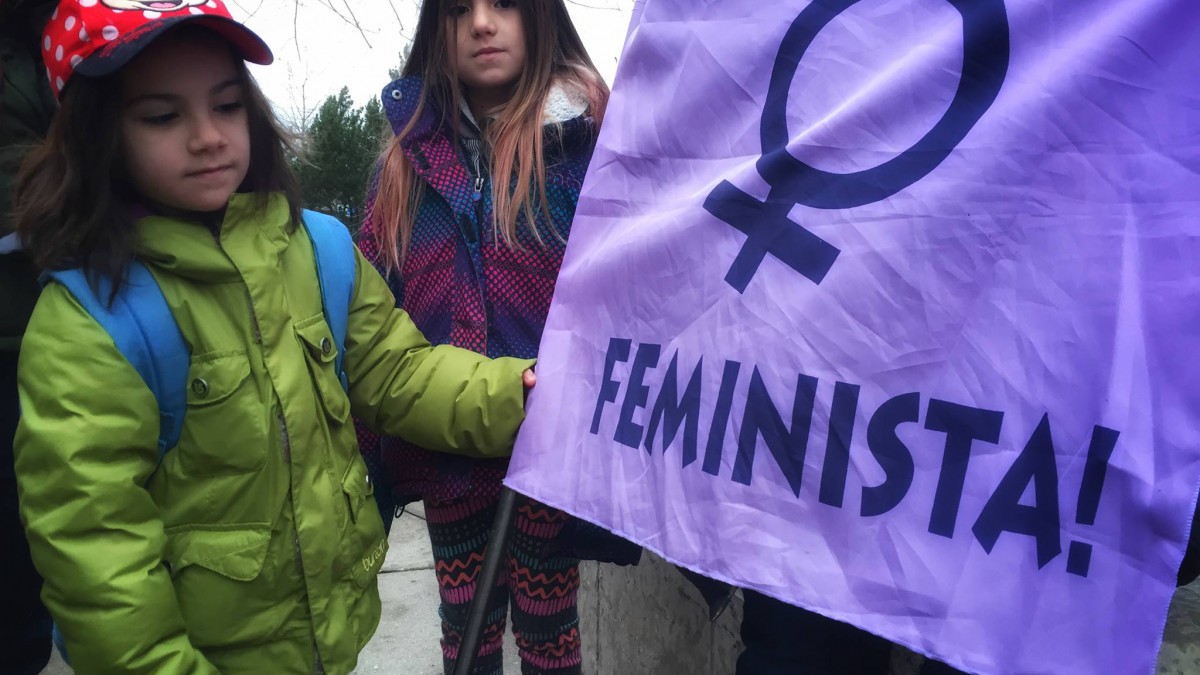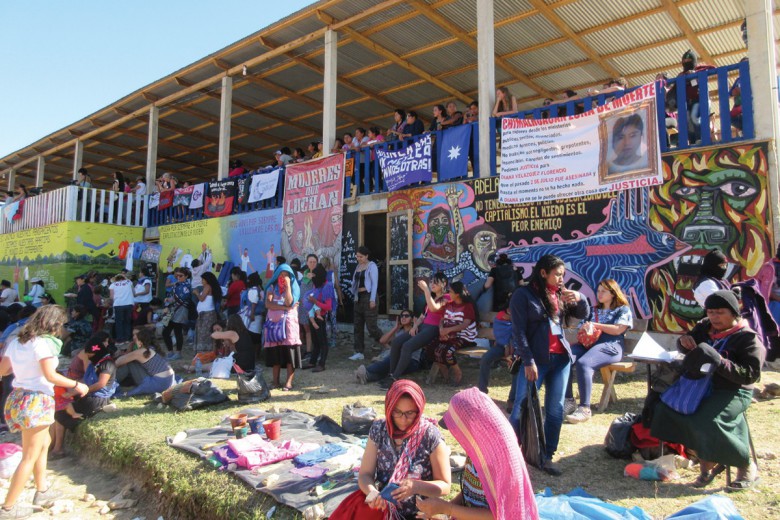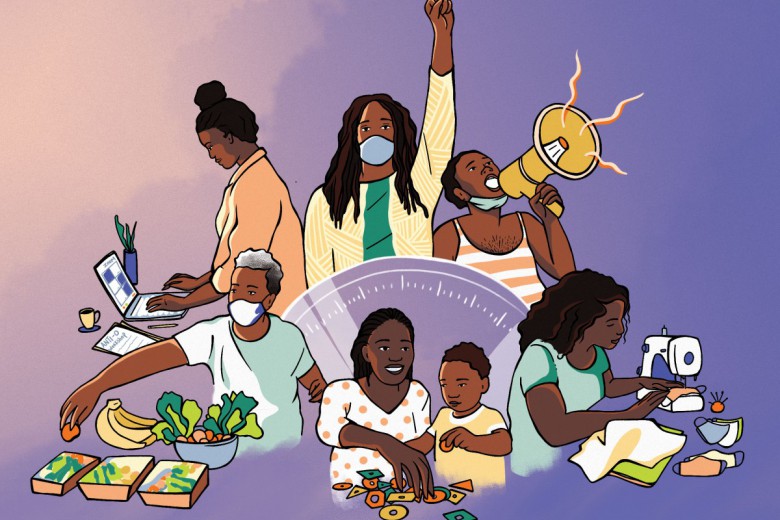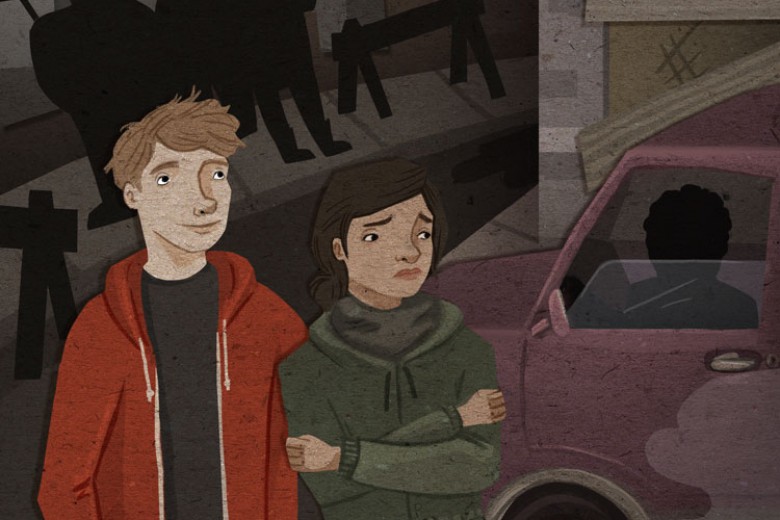“I’m not a Star Wars fan but I am a rogue,” Métis elder Marjorie Beaucage said to the 600 people gathered at City Hall for the Saskatoon Women’s March on Saturday, January 21, 2017. Could we imagine, outside this fantasy, that a group of people could defy the bureaucracy of the Rebel Alliance to go destroy the Death Star, even knowing they would not survive? Could we imagine loving something, a cause, beyond ourselves? Would we be prepared to lose it all, to give it all, in order to be part of something larger than ourselves? The reference was met with cheer. The crowd was cheerful, but there were so many other feelings in the air. The realization that we are here, and we are so many. Two pre-teen Indigenous girls held a sign that read, “Women’s rights are human rights.” My two daughters, who are 5 and 8, sat on the steps holding our Chilean “Feminista!” flag. Many children ran around on that chilly, grey morning, while babies were bundled up in their parents’ arms, some probably at their first march.
On that day, women and their allies marched in over 600 rallies in 56 countries, with an estimated total of three million people marching in the world simultaneously in solidarity with the Women’s March on Washington, posed as a gesture of resistance to U.S. President Donald Trump’s hateful rhetoric.
“We need to be reciprocal, respectful, and responsible in our relations,” emphasized Beaucage in her closing words. Responsibility and accountability for each other seems indeed to be in open defiance to our contemporary neoliberal values that tell us to accumulate, to fence ourselves in, to compete, to sink the one next to us so we can advance ourselves. In Saskatoon, Treaty 6 territory and the homeland of the Métis, where settler descendants and immigrants are uninvited guests of the Metis and the Cree people, we need to recognize our mutual responsibilities and that we are accountable for each other, as well as for our relations to the land, the animals, and each other. Just weeks ago, on New Year’s Eve, a 22-year-old Indigenous woman froze to death outside of St. Paul’s Hospital, and we should all be accountable for it.
After Beaucage, the next speakers were NDP MLA Danielle Chartier, city councillor Hilary Gough, and me. I spoke as an immigrant with an anti-imperialist agenda woman who grew up in a dictatorship. Then the crowd marched; some estimates put the turnout at about 1,000. I ran into several students, friends, co-workers. The girls were cold, so an older woman lent them cozy mitts. The atmosphere was friendly, hopeful, like something very new just begun.
The movement behind the organizing of women’s marches across North America is a multivocal grassroots movement, with multiple voices and multiple demands for gender, racial, environmental, economic, and social justice. And while one event rarely defines a movement, the mind-blowing scale of the rallies across the world, and the conversations and debates surrounding them, seem to mark the visible face of third wave feminism: unapologetically intersectional and multivocal, they denounce rape culture, support reproductive justice, express solidarity with movements like Black Lives Matter, Idle No More, and the Fight for $15, and with Muslims, refugees, immigrants, and LGBTQ communities. This is not to say that these alliances are completely unproblematic or are established in completely smooth ways. There were multiple accounts of folks of colour pointing out that the march was another example of the erasure of minorities while putting white women in the centre.
But the moment seems ripe. It builds on decades of brewing social struggles around the world, and the recent reinvigoration of a civil rights movement with Black Lives Matter in the United States, and of Indigenous organizing with Idle No More in Canada. The two decades of Zapatismo in Mexico proved successfully how Indigenous communities can build self-governance and provide themselves with education, health, and anything they need to lead lives with dignity. It’s a world where many worlds fit in. The Occupy movement had picked up where the anti-globalisation activism had left in the 2000s. Conversations and debates on each of these movements had come to signal more to the need of intersectional analyses that recognized the presence of racism, sexism, misogyny, ableism, homophobia and transphobia within activist movements. And as the term “decolonize” becomes ubiquitous in leftist and feminist conversations, Indigenous folks have to keep reminding us that decolonization is not a metaphor, but refers to the land. When the resistance at Standing Rock exploded last summer on the world stage, the message was: Water is Life. Unlike Oka two decades before, Standing Rock received unprecedented global attention and support.
In each of these movements, it is historically marginalized subjects, especially Indigenous women, who are leading the way. And in many of these movements, intersectional feminism has become a useful tool to reflect on privilege and oppression for marginalized subjects and their allies. Intersectional feminism is a framework which emerged from Black feminist thought, Chicana theory, and Third World and transnational feminists who demanded to de-centre the norm of the Western white heterosexual cisgender able-bodied woman from feminism. Queer folks have been demanding that feminism make room for more sexes, more genders, and more identities and relationships to be recognized. In academia, critical disability and critical race studies have long been pointing at the ways we attribute humanity to some bodies while denying it to others.
Within this context, it is easy to feel hopeful and consider the women’s marches around the world this Saturday a potential watershed moment in feminist history. In the future, we may be able to point to this moment as the critical time when all our scattered struggles came together as we realized how structures of oppression such as capitalism, colonialism, patriarchy, imperialism, and heterosexism are interconnected. In Washington, Angela Davis summarized it like this: “This is a women’s march and this women’s march represents the promise of feminism as against the pernicious powers of state violence. And inclusive and intersectional feminism that calls upon all of us to join the resistance to racism, to Islamophobia, to anti-Semitism, to misogyny, to capitalist exploitation.”
We can use this momentum to build democracy from below with the tools of intersectional feminism, to bring margins to the center and lift the most vulnerable and marginalized subjects. We have to think beyond national borders and look south of North America. We must make our leaders accountable for the blatant human rights violations that the extractive industries commit in Honduras, Guatemala, Perú, and Colombia, where environmental and Indigenous leaders are routinely targeted with violence, and where Canadian mining companies like Barrick Gold and GoldCorp pay security guards to murder union leaders with machetes. Third wave feminism has risen to its visible form, and with sustained organizing, it will sweep the world with positive change. It will not be easy, but hopefully, the force will be with us.







